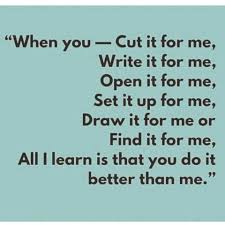Fall means apples. It is time to pick out some tasty apples to eat and try. Have your child go with you to the grocery store, or even better an apple orchard. Pick out a variety of apples to try. In school, we typically try to pick 3 or 4 apples that look different (granny smith, golden delicious, red delicious and Macintosh for example).
When you get home have your child observe all the different apples. Ask your child to describe some attributes that are the same. Then have them compare the differences. Let your child choose one apple and have them illustrate the apple with crayons or other coloring media.
Now discuss the parts of the apple. How do you think the apple was attached to the tree? Why do you think the bottom is bumpy? Can you describe the skin? By asking questions such as these, you are allowing your child to explore the apple and use their creative thinking to discover the step, blossom end and attributes of the skin.
Now for the fun part… cutting open the apple. Pick two apples to cut. Slice one in half from stem to blossom. Have your child observe and explore the flesh, seeds, core and skin. Then ask your child what they think will happen if you cut the apple in half through the middle the other way. What do you see? Why do you see a star shape? What caused that? How many seeds do you think are inside?
Finally taste the different types of apples and discuss flavor and textures.

